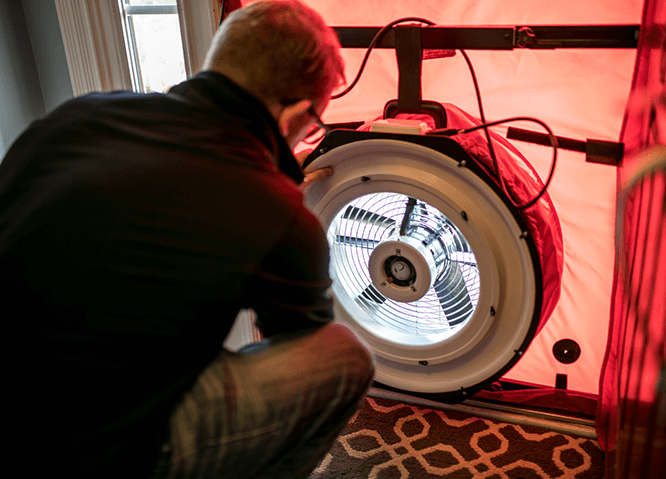First of all, you need to check the current code in your building jurisdiction. If its a IECC 2021 code, all duct systems must be tested inside and out of the conditioned space. If you are on the IECC 2018 or earlier, duct testing is only required when parts of the HVAC system are outside of the conditioned envelope. This includes areas like unconditioned attics, garages, and crawlspaces. If any supply or return duct chases, flexible lines or air handler units are in these areas, by IECC 2015 code, a duct leakage test is required. If a crawlspace is conditioned, then no test is required.
A duct leakage test (duct testing) can be performed at rough-in before drywalling, or post-construction. In both cases, the requirements are the same. The system will need to achieve a leakage rate of less than 4 CFM (cubic feet per minute) per 100 square feet of the home. Here is an example:
40 CFM moving through the ducts when put under pressure.
1000 sqft house.
38CFM / 1000sqft = 0.38 x 100 sqft = 3.8 CFM
This is commonly referred to as a 4% leakage rate.
Through our blower door tests, you will be able to physically feel the air coming through any gaps in the exterior envelope of the house. You can even feel the air with your hands while the fan is moving.
Our team will use the fan to discover weak spots in your building envelope and get a baseline for any repairs that need to be made.

Testing the ducts requires sealing all the openings of a duct system. This includes all supply and return registers. We do this by using large HVAC tape to cover and seal the openings. This process can take some time as we try to create the best seal possible. Our fan is then sealed to the air handler or a large return opening.
The fan is run to depressurize the duct system to -25 pascals. The amount of air moving through our fan is then measured. The number generated under 25 pascals of pressure is known as CFM@25. This CFM number is the number used in the calculation.
After performing thousands of tests, we have come up with a list to help you easily past our test.